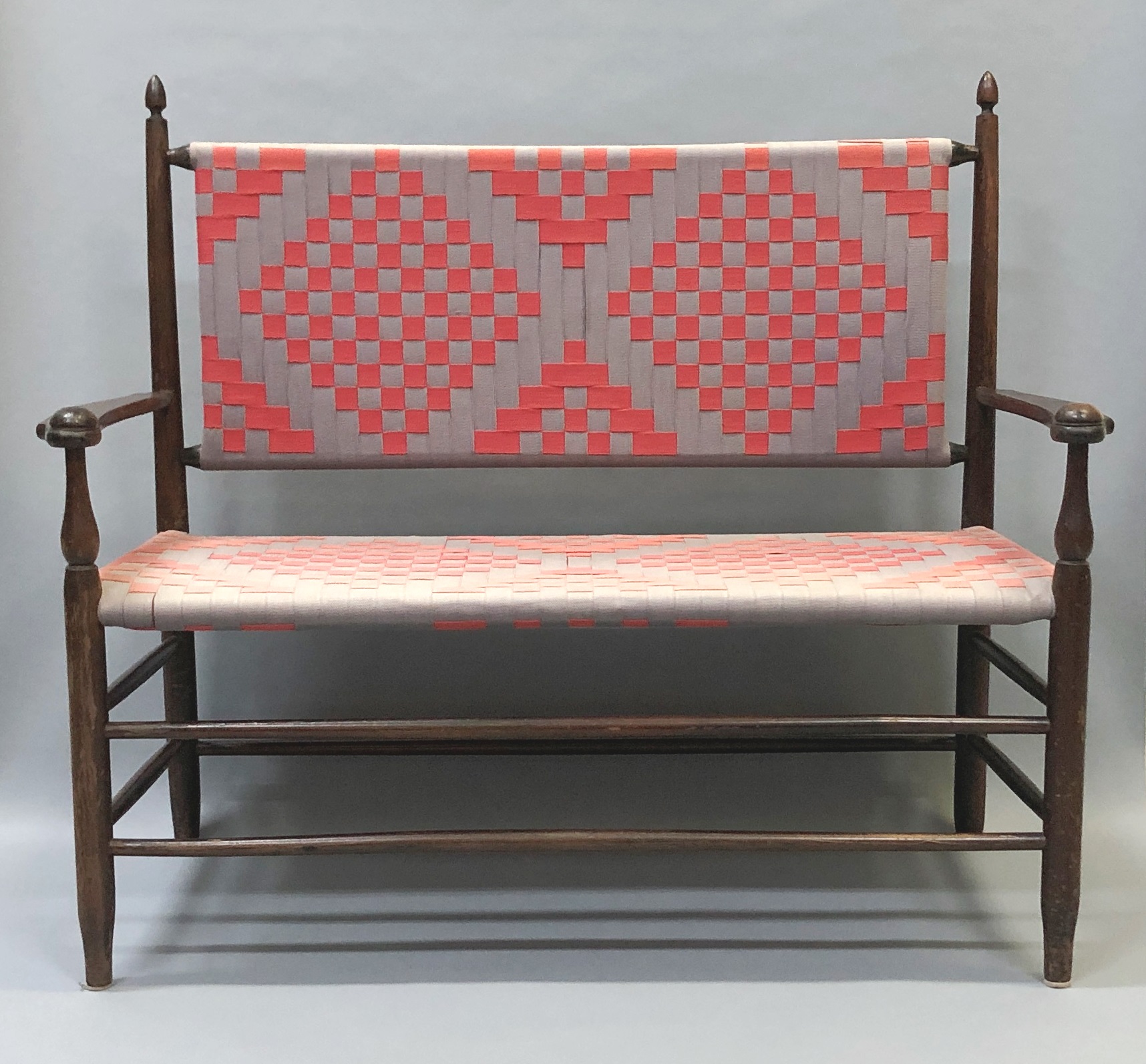
Settee, South Family, Mount Lebanon, NY, Ca. 1890s. Shaker Museum: 2021.1.1. Staff photograph.
Shaker Museum holds an extraordinary collection of materials relating to the Shaker chair business at the Mount Lebanon South and Second Families. Chairs made at Mount Lebanon from the late eighteenth century through the mid-1940s were the one category of furniture the Shakers consistently made both for their own use and for sale to the […]
Shaker Museum holds an extraordinary collection of materials relating to the Shaker chair business at the Mount Lebanon South and Second Families. Chairs made at Mount Lebanon from the late eighteenth century through the mid-1940s were the one category of furniture the Shakers consistently made both for their own use and for sale to the outside world. This industry’s story, in terms of the Shakers’ innovations and adaptations in the areas of design, manufacturing, and marketing – is an important one. The part of this story that is most familiar to the public occurs in the second half of the nineteenth century, when the Shakers at the South and Second Families greatly increased their production and sales capacity through the addition of new modern machinery, an assembly-line-like manufacturing process, and a new mail-order marketing strategy. Shaker Museum’s collection represents this period particularly well. While much of the machinery associated with the industry was destroyed in a series of fires, the museum does have jigs and fixtures used to shape chair rockers, arms, and back slats; a gluing table used in assembling chairs, and hundreds of parts of unassembled chairs. In addition, it has chair catalogs, advertisements, and forms used to place orders for chairs. As well as the Museum’s collection documents the Shakers’ chair business, there are always missing pieces to the story. One of the missing pieces, until recently, was a rare product made in the South Family chair factory – a settee. Through the thoughtful generosity of a donor, Shaker Museum’s collection now includes a fine example of a Shaker settee.

Settee, South Family, Mount Lebanon, NY, Ca. 1890s. Shaker Museum: 2021.1.1. Staff photograph.
Settees were generally made with parts used in the standard line of Shaker side chairs. That line was designated by numbers – “0” being the smallest, “7” being the largest. Using the front posts, back posts, and arms from these chairs, the Shakers made settees by extending the width of a chair to be large enough to seat two and by adding elongated stretchers between the two front posts and between the two back posts. Comparing the measurements of the settee with numbered Shaker chairs, it appears that the example at hand was made using parts from a standard number three side chair.

Shipping Receipt, Boston & Albany Railroad, 1895. Edward Deming Andrews and Faith Andrews Memorial Shaker Collection, Winterthur Museum, Garden & Library, reproduced from Charles R. Muller and Timothy D. Rieman, The Shaker Chair. Canal Winchester, Ohio: The Canal Press, 1984, p. 212.
While settees were not offered or mentioned in any of the Shaker chair catalogs, documentation, in the form of a shipping receipt dated April 5, 1895, in the collection of the Winterthur Museum, Garden & Library, notes that two settees were shipped to the Chicago firm, Marshall Field & Company. That same year Sister Genevieve DeGraw, writing for the Mount Lebanon’s South Family in the Notes about Home column in the July, 1895 issue of The Manifesto (page 162), noted that:
There continues to be a constant demand for the famous Shaker chairs, sofas, footrests, and numerous other articles… We are quite positive that the South Family at Mount Lebanon is the champion chair maker of the world. The work is of the very best and it is known that
They’re useful–ornamental.
Two grand principles combined.
You may search the whole world over,
Nor better chairs you’ll find.
Then their sofas and their footrests
Are the best the world can give;
Do not try to find their equal,
For you cannot while you live.
As very few examples of Shaker settees are extant, the Shakers Museum is pleased to have this significant object added to its collection.